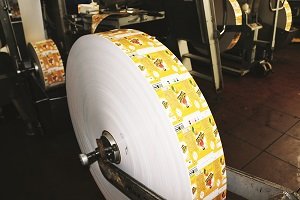The aseptic paper board and laminated paper and foil solutions for liquid and food packaging continue to grow in product segments ranging from milk to alcoholic beverages. The main provider of both laminates and filling and sealing solutions in this segment has been Tetra Pak, which is practically the inventor of this category of packaging. While some forms of aseptic liquid packaging such as gable top cartons require a cold chain, the outstanding feature of the Tetra Pak has been its ability to significantly prolong the shelf life of food and beverage products without refrigeration.
Tetra Pak, with its factory near Pune in Western India, has hardly had any competition although in the past four years some Chinese suppliers have entered India which are mainly in the liquor segment, where Tetra Pak is also present. The only prospect of significant competition comes from the new Uflex liquid packaging project in Sanand, commissioned in the past month. Of course, Uflex still has to prove its technology and compete on cost and performance as well.

According to industry experts such as P Raghunath, the current growth of aseptic board packaging in India has perhaps doubled to 16 to 18% from what it was a decade ago. Current Indian consumption is estimated at approximately 12 billion packs annually compared to Chinese annual consumption of 120 billion packs. In spite of the current high growth, factors that have contributed to the relatively slow growth over the years, especially in comparison with China, are the high capital expenditure required in developing such projects (the Uflex project in Sanand is said to be a Rs 800 crore project) as well as the higher cost of the process and packaging, which raises the price of the end product.
There has been a lack of technology inputs and knowledge, especially for the smaller players in the food and beverage segments including milk and fruit juices. In addition, the raw material for the packaging material or laminate has to be imported in the main. There has also been a lack of penetration of this technology in the co-packing segment, which could be a way for smaller producers to pack their products without making a major investment in their own plants.

Nevertheless, experts such as Raghunath expect a sudden increase of volumes in this type of packaging due to rapid change in lifestyle and increase in disposable incomes across the country. He points out that this kind of aseptic packaging has several advantages over flexible pouches and bottles made of either pet or glass, including the security from adulteration and the fact that no cold chain is required for products so packed until they are opened. He says, “We can even explore the commercial viability of exporting liquid milk using this technology and very high volumes can also be produced quickly if needed.”
Apart from the new Uflex plant, Chinese manufacturers are coming to India and have mainly entered the liquor segment so far. The Chinese suppliers with their lower capex requirements are likely to find success if they are able to focus on technology support. Another interesting possibility is that of setting up of copackaging plants, such as the already existing plants for filling and sealing of pet bottles and metal cans for various kinds of beverages.












